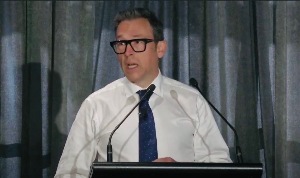
FMA director of investment management, Paul Gregory says more than 40 submissions were made on its KiwiSaver fee consultation document last year.
He says the guidance was done to ensure that members were getting value for money from the fees they paid their KiwiSaver provider.
“The guidance expects boards and management of KiwiSaver and other managed fund providers to regularly evaluate what they charge their members and investors, and why, and the value their members and investors receive in turn.”
Once that is done it needs to be “properly disclosed and discussed with members and investors to help them make informed investment decisions”.
Gregory said there was a need for the regulator to provide guidance on KiwiSaver; “From our perspective, a maturing but still inefficient market means a risk of harm to investors.”
“Harm from; paying too much, for too long, for too little; paying anything for something they are not getting; being in the wrong product. The market is not working if investors can be set up to fail.”
A number of submitters argued the markets will rule and members can switch providers if they are not happy. Gregory disagreed.
“We agree member mobility protects against poor value. If exercised soon enough. But members simply don’t have enough clear information to help them decide if they need to leave a poor-value provider and, if so, where to go instead.”
Gregory also had some strong words for those who said that the market would punish providers for any poor management saying; “This is like saying earthquakes are the best resolution for poor building standards.”
“So yes it will be the market, not the FMA, eliminating unreasonable fees and poor value. But we should – and will – help the market do it sooner. More transparency and better information for investors, our fellow frontline regulators, media and the public is how to do that.”
| « Rob Everett: The year ahead | Mann on a mission to diversify financial advice » |
Special Offers
Sign In to add your comment

© Copyright 1997-2024 Tarawera Publishing Ltd. All Rights Reserved
look at the bottomline. that is, the net returns after fees and taxes. would you rather invest in a fund that charges a 0.3% fee and you get a 3% returns after fee, or a fund that charges 3% and you get a 10% returns after fee? for me, getting the 10% returns is value for money, NOT the 3%.
wouldn't it be more productive to compare various fund base on their returns after fee rather than just the fee itself?
if every car manufacturer has to work within a production cost guideline, a mini will run as fast a ferrari.